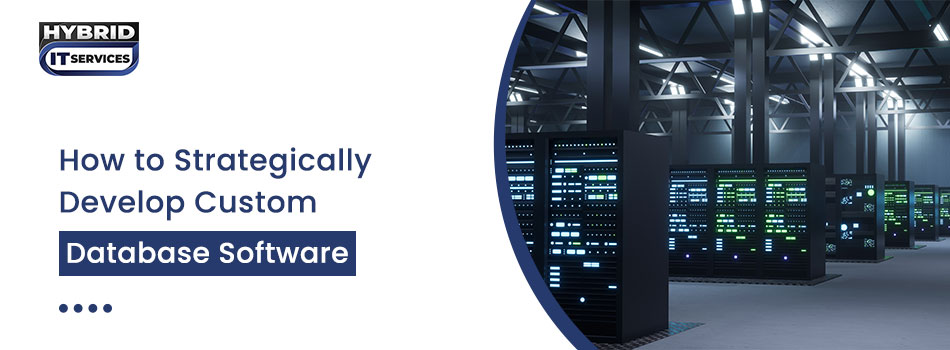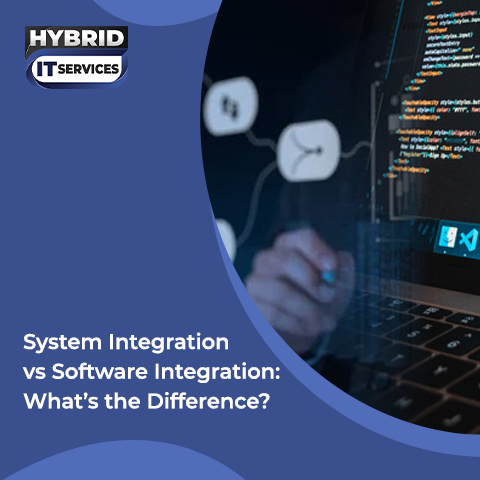In IT industry data is the backbone of most businesses. Whether you run a small startup or a large corporation, having an efficient and reliable database is crucial for your operations. Custom database software offers a solution that aligns perfectly with your specific business needs. Let’s discuss each step of the process to help you create a database system that enhances your business operations.
The Benefits of Custom Database Software
Custom database software is designed to meet the unique needs of your business. Unlike generic database solutions, custom software can be tailored to handle your specific data types, processes, and reporting requirements. Here are some key benefits:
Tailored Fit:
Custom databases are built specifically for your business processes, ensuring that all your data management needs are met without unnecessary features.
Scalability:
As your business grows, your custom database can be scaled up to handle more data and more complex operations.
Efficiency:
By focusing on the exact needs of your business, custom databases can streamline operations, reduce redundant data entry, and improve overall efficiency.
Integration:
Custom databases can be designed to integrate seamlessly with your existing systems and software, ensuring smooth data flow across your organization.
Security:
Custom solutions offer enhanced security features tailored to protect your specific type of data from potential threats.
Defining Your Business Objectives
Before you begin developing custom database software, it's essential to have a clear understanding of your business needs and goals. This involves several critical steps.
Identify Key Stakeholders
identify key stakeholders who will be using the database or have a vested interest in its development.
Define Data Requirements
Define your data requirements by identifying the types of data you need to store and manage. This could include customer information, sales data, inventory records, employee details, and more. Understanding the data landscape is crucial for designing a database that can handle your specific data types and volumes effectively.
Determine Use Cases
Determine the use cases for your database by understanding how different users will interact with it. For example, what data entry, retrieval, and reporting tasks will they perform? Mapping out these interactions will help in designing an intuitive and efficient user interface and workflow.
Set Clear Objectives
Set clear objectives for your custom database software. Outline what you aim to achieve, whether it’s improving data accuracy, speeding up data retrieval, enabling complex data analysis, or enhancing data security. Having clear goals will guide the development process and ensure the final product meets your business needs.
Assess Current Systems
Assess your current systems to identify their strengths and weaknesses. This evaluation will help you determine what improvements are needed and how the new custom database can address existing shortcomings.
Choosing the Optimal Database Platform and Technology
Understand Different Types of Databases
Choosing the right database platform and technology is crucial for the success of your custom database software. The first step is to understand the different types of databases and their use cases.
- NoSQL Databases: NoSQL databases like MongoDB, Cassandra, and Couchbase are suitable for unstructured data and high-performance applications. They offer flexibility in handling various data formats and are designed to scale horizontally, making them ideal for big data applications and real-time web applications.
- In-Memory Databases: In-memory databases like Redis and SAP HANA provide fast data access and are useful for applications requiring real-time analytics. These databases store data in memory rather than on disk, offering significant performance advantages for specific use cases.
- Cloud Databases: Cloud databases, offered by providers like AWS, Google Cloud, and Microsoft Azure, offer scalability and flexibility. They provide managed services that handle the infrastructure, allowing you to focus on developing your application. Cloud databases can be an excellent choice for businesses looking to leverage the cloud's scalability and cost-efficiency.
Technology Stack
When selecting the technology stack, consider programming languages that align with your existing tech stack and the expertise of your development team. Common choices include Python, Java, C#, and JavaScript. Utilize frameworks and tools that support database development.
Understand Different Types of Databases
Considerations for selecting the right platform and technology include scalability, performance, security, and cost. Ensure the database platform can scale as your business grows and can handle your performance requirements, including query speed and data throughput.
Prioritize platforms with robust security features to protect your data and evaluate the cost of the database platform and associated technologies, considering both initial setup and ongoing maintenance costs.
Developing Your Custom Database Software
Once you've identified your needs and selected the appropriate technology, it's time to start building your custom database software. This process involves several critical steps, starting with designing the database schema. Create an Entity-Relationship Diagram (ERD) to visualize the database structure, including tables, fields, and relationships.
Design the Database Schema
Next, develop the database by creating the database structure based on your schema design. If you’re moving data from an existing system, develop a migration plan to transfer data accurately and efficiently. This step is crucial to ensure the integrity and consistency of your data during the transition.
Develop the Database
Develop the application logic that will interact with the database, handling data insertion, updates, deletions, and queries. This involves backend development to ensure that the database operations are performed efficiently and securely.
Develop Application Logic:
Write the application logic that will interact with the database, handling data insertion, updates, deletions, and queries. Develop APIs to allow other applications and systems to interact with the database.
User Interface Development
User interface development is another critical aspect of building custom database software. Build a user-friendly interface for users to interact with the database, whether it's a web application, mobile app, or desktop application. Focus on user experience (UX) design to ensure the interface is intuitive and meets the needs of the users identified in the planning phase.
Testing and Quality Assurance
Testing and quality assurance are essential to ensure the reliability and performance of your custom database software. Conduct unit testing to test individual components of the database and application logic to ensure they function correctly.
Deployment
Finally, plan and execute the deployment of the database software. Develop a deployment plan, including timelines and rollback procedures in case of issues. Set up monitoring to track the performance and health of the database, and plan for regular maintenance and updates to ensure the system remains efficient and secure.
Choosing Hybrid IT for Custom Database Software Development
Hybrid IT, which combines on-premises infrastructure with cloud services, offers several advantages for custom database software development:
Cost efficiency is another significant advantage. By keeping sensitive or critical data on-premises and leveraging the cloud for less sensitive data or peak demand periods, you can optimize costs. This approach ensures that you’re only paying for the resources you need when you need them, reducing overall IT expenses.
Scalability is a key benefit of a hybrid IT setup. The cloud component provides the ability to scale resources up or down based on demand, ensuring your database can grow with your business. This scalability ensures that your database remains efficient and reliable as your data volumes and processing requirements increase.
Hybrid IT also enhances disaster recovery capabilities. By replicating data to the cloud, you can ensure business continuity in case of on-premises failures. This approach provides a robust disaster recovery solution that can minimize downtime and data loss, protecting your business operations.
Conclusion
Developing custom database software is a strategic investment that can significantly enhance your business operations. By understanding your needs, selecting the right technology, and carefully crafting the system, you can create a database solution that is tailored to your specific requirements. Embracing Hybrid IT Services can further enhance your database software's flexibility, scalability, and resilience. With a well-planned and executed custom database, your business can achieve improved efficiency, better data management, and a competitive edge in the market.






